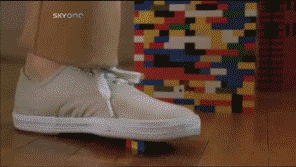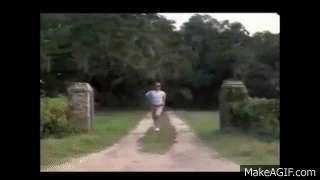Some of you may remember the deep dive that I took into the shoulders last year. We looked at the anatomy and physiology of how the shoulder moves, common problems people encounter with their shoulders, and a comprehensive video library of exercises to balance and bulletproof your shoulders. It is easily my most-read and most-shared series of blogs.

Well we're hunkering down and taking our next anatomical dive into the hips. We're going to look into hip biomechanics, the hip muscles, and why your hips might be hurting. As always, I am not a doctor or physical therapist and if you have injuries you need to stop reading the internet and go get them evaluated by a professional!
Not only are the hips my favorite joint but they're the sister joint to the shoulders so it makes blogical sense as well.
This blog is going to start with the basic anatomy of the hip. From there, we're gonna look at the giant muscles that create the big movements: the quads, the hamstrings, the psoas and its affiliates in the front of the hip, and the glutes and their affiliates in the back of the hip. Next we're gonna do a whole piece just on the abductors and adductors, the collective black sheep of the hip muscle family. And it would be criminal to skip out on the SI joint. After that, it's gonna be exercise time. How to do a self-evaluation of your hips, troubleshoot the movements you might not do well, and videos of a million exercises you can use to improve. (All anatomical stills are taken from the brilliant Essential Anatomy app.)
The reason the hips are my favorite joint is because of the enormous effect they have on the body. By the time you get out of my hip jungle, you're gonna feel like a new person. People with happy hips are happy people. So let's get you some happier hips.
But first, a vocabulary quiz:
DON'T SKIP THIS PART. IT CONTAINS VITAL MOVEMENT VOCABULARY THAT YOU WILL NEED WHEN I AM BLATHERING ENDLESSLY OVER TWENTY PAGES OF ANATOMICAL COMMENTARY. JUST GRAB A GLASS OF WINE AND LEARN THEM.
Flexion: When your leg is in front of you, or when you bring a knee up towards your chest. If you can hug your knee against your chest, your hip is in the deepest flexion it can be in.
Extension: When your leg is behind you, as in when you're pushing off the toes while walking. We will talk about hip extension more in this series of blogs than probably any other movement.
External rotation: That position where your impatient mother was tapping her toe, waiting for you? That tapping leg was in external rotation and it's a natural movement for most people.
Internal rotation: Turn one knee and foot in, to point at the other leg. This is internal rotation and owing to lack of training, it is often a highly unnatural movement for people. (But it shouldn't be that way!!) I think of hip internal rotation training as one of the highest-payoff exercises in the body. We'll get to that.
Abduction: Stand with parallel feet and lift one leg out to the side, keeping your toes pointed forward. You have abducted your leg. (This is how I remember abduct vs. adduct. Like someone has kidnapped my leg and taken it away from me.)
Adduction: From the same stance as above, close your leg back down to your parallel feet position. The act of bringing the leg back down is adduction. (You have added your leg back into your body.)
OK, you passed. So let's find out what's actually moving around in there.
Like the shoulders, the hip is a ball and socket joint which means it has a massive available range of motion.

Your hips allow your legs to swing forward while running; to swing back to kick a football; to pull the leg out for perfect ballet extension; to pull the leg in for dizzying spins on figure skates; to rotate externally so Steph Curry can plant right before driving left to the hoop; and to rotate internally so Megan Rapinoe can cross-step to evade every defender.
If you're not Megan, you still need your hips to be strong, and not just for exercise. Standing on one foot to step into a pair of pants requires all of your hip muscles. So do long sunset beach walks and bending down to pick up your three-year-old's fucking Legos.

The hips and SI joint can create or restrict an entire world of movement for you. A dysfunctional hip can reverberate from the neck to the feet. Why? Because hips are the keystone of your body's build. They support everything. Take them out or weaken them, the entire bridge collapses. This is why crunches strengthen your ab muscles but don't strengthen your core. Your core includes the pelvis and hips!
In the hip (unlike the shoulder), the leg bone is buried deeeeeeeeeep within the hip socket. That depth is preserved in a few ways: by exceedingly strong, tough ligaments which twist around the leg bone to hold it tightly; by the labrum (a feature you may only have heard about because you know someone who tore theirs and it was definitely a hockey player); by strong muscles which guide all of the directions that the leg and hip can safely go; and, just like the shoulder, by a suction cup effect which helps to pull the leg into the socket and keep it where it's supposed to be.
So let's take a look at at your femoral joystick, from the inside out:
Anatomy!

The big difference between the shoulders and hips is their relative stability. Your shoulder dislocates in the slightest breeze, while it takes the Incredible Hulk personally removing your thigh bone to dislocate your hip. It's harder to do because the hip joint is buried deeply in the center of your body, surrounded by four capsular ligaments and twenty-two muscles. These let the hips provide a super strong pedestal for your spine, neck, and arms to do their spiny, necky, and army things.
Half of your hip joint is created by the biggest bone in your body (the femur, which makes up ~25% of your height). The other half is the pelvic girdle, which creates the socket. (Below is the view of a person's back.)

Although the pelvic girdle always looks to me like nothing more than an Aunt Annie's Pretzel.

The pelvic girdle doubles as the bottom of the spine so you can probably see pretty clearly why the hips and lower back are, well, joined at the hip. (Ugh honestly I cannot help it.)
In between all of these bony connections are short, thick, tough ligaments to withstand a shit-ton of abuse. Every step, every twist, every tiptoe reach, every stumble goes through each one of those ligaments with forces from 1.5x your bodyweight (walking) up to 18x your bodyweight (elite gymnastics).
Take a look at these pics. Everything in white (except for the rib cartilage) is a ligament.


These ligaments are more badass than just keeping your leg attached to your trunk, although that is an admittedly important feature. They also absorb shock and help create the spring in our step.
How? In a very cool way. When we're born, our hips are naturally splayed out (think of a baby who so easily puts the soles of their feet together). As we get older, the leg migrates, rotating into the socket and creating a spiral of the ligaments around the joint. This allows us to ultimately get up and walk the way that we do. (My shitty finger-arrows indicate which way the hip moves to tighten the spiral.)
(Did you know this anatomical shift happens to flounders and other flat fish too? They are born looking like normal fish with eyes on sides and then rotate through their childhood and experience EYE MIGRATION—the creepiest phrase ever—to end up in their flattened adult position with eyes on top.)
In the hip, it ends up looking like this:


Then, it gets even more interesting. The hip ligaments become spiraled more tightly in extension (leg behind you) and more relaxed in flexion (leg in front of you). This means that when you walk, your ass muscles pull back against those tough ligaments, like loading a spring and then letting it go to allow the leg to swing forward.
Furthermore, our preference, which you'll notice if you lie down flat on your back and let your legs relax, is to let the feet fall outwards. They don't naturally point forward. In order to walk with our feet facing mostly forward, we steadily pull our legs out of a relaxed position and into a tenser, more front-facing position.
All of this tension creates the spring that propels us forward while walking and running.

All of this is already amazing, I know. Yet as the wise men said after delivering gold and frankincense, just wait, there's myrrh!!!!!
(I will repeat this joke until I die.)
Where does walking and running actually come from? Glad you asked.
On top of the ligaments, we've got an assload of muscles and tendons. You might think you only have one ass, but you have two asses. Your left ass has three glute muscles and your right ass has three glute muscles. Essentially, you have six times the ass you thought you did. Take that, J.Lo.
(Muscles marked with a yellow asterisk, one more glute is hidden from view.)

The front of the hip has four quad muscles and six inner thigh muscles. Quads marked in yellow (the one on the left is hidden by the central one on the right.)

The back of the leg has three hamstrings which are responsible for both extending the hip and bending/rotating the knee.

Moving further down, the femur connects to the tibia and together they create the knee. Which is, of course, why hip problems can translate directly into the knee joint.
The job of all that connective structure is to help dispel as much of the force through as much different tissue as possible. If you've ever stepped down and the ground was further away than you thought and you slammed down onto a straight leg, then you know what it would be like all the time if we didn't have muscles, tendons, and knees to distribute all that energy.
And that's it! A few bones, a few muscles, a few ligaments, and you've got legs.
Next time:
1) The major movers: Quads, Hams, Glutes, and Psoas. Where they start, where they end, and what they do. When we did this for the shoulders, I compared each one to a Baldwin brother. This time, I need a new quartet. Kardashians...?
2) How each of these muscles affects the movement of the leg, hip, and SI joint. What happens if you're quad dominant? What about if you've got weak hamstrings? What the fuck is a psoas and why does it have a stupid name with a stupid spelling?
Stay close, boys, we're going in.






